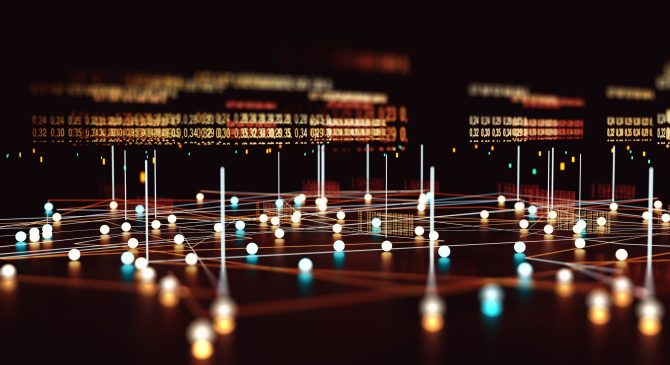Andrea Giammanco and Maxime Lagrange
The complexity of particle detectors has grown steadily with time, making it increasingly difficult to optimize them. In fact, it is now common to integrate different detector technologies in the same apparatus, each of them serving a different purpose, whose performances are inter-connected in subtle ways. The simple-minded approach of optimizing the detector parameters one by one, in such conditions, is far from guaranteeing optimal outcomes; on the other hand, a brute-force approach based on scanning the full grid of possibilities becomes less and less sustainable as the number of parameters increases. This is already true since long for the gigantic multi-purpose experiments in fundamental particle physics, but it is more and more of a concern also in other areas, including muon tomography, which is coming of age for many applications including border security, as the existence of SilentBorder demonstrates.
To solve this problem, a new software paradigm may come to the rescue: differentiable programming (DP). DP has rapidly gained ground in various areas of technology, as it is prerequisite for modern machine learning. DP and automatic differentiation allow the use of gradient-descent optimization algorithms, making it possible to address the simultaneous optimization of millions of parameters of a composite detector and, at the same time, of the algorithms to interpret its raw data, whilst also accounting for the costs of the components (and any relevant constraints, such as size, power consumption, et cetera).
These new tools can assist researchers in making more informed design choices, efficiently exploring less-orthodox configurations that may otherwise be overlooked but could nonetheless be performant. This is the broad goal of a recently-formed consortium of physicists from various subfields and computer scientists: the MODE Collaboration (for Machine-learning Optimized Design of Experiments). The concepts outlined above are applicable to a large set of challenges in fundamental and applied physics, as described in a recent white paper to which two SilentBorder members contributed:
Toward the End-to-End Optimization of Particle Physics Instruments with Differentiable Programming: a White Paper / T. Dorigo, A. Giammanco, P. Vischia (editors) et al., arXiv:2203.13818 [physics.ins-det].
Cosmic-ray muon tomography is one of the applications considered most immediately promising, and the MODE Collaboration has already begun prototyping a software package, TomOpt, to research and develop techniques for detector optimisation in this field, in close synergy with SilentBorder goals which aim at applying this technique to border security and contraband.
Other aspects of computer science can benefit muon tomography and were discussed at the Second MODE Workshop on Differentiable Programming for Experiment Design (see https://indico.cern.ch/event/1145124/), held in Kolymbari (Greece) in 12-16 September 2022, where both computer science and muon tomography communities were brought together. Konstantin Borozdin, one of the inventors of the Multiple Scattering Tomography technique, insisted in his talk on the impact machine learning (ML) tools can have on image reconstruction and material classification.
Performance of such techniques strongly relies on a training phase using data from Monte-Carlo (MC) simulation tools like GEANT4. Despite being undoubtedly accurate, GEANT4 muon propagation through matter can be a very demanding task from a computational point of view. Creating ML-based GEANT4 surrogates would allow to overcome this limitation by offering a more efficient computation while providing realistic muon scattering, displacement and energy loss distributions. This was demonstrated for example by Pablo Martinez, a MODE member, showing how a surrogate based on an adversarial neural network can be 50 times faster than GEANT4 while reproducing its results with acceptable accuracy. Such a process could be generalized to the detector response part of the simulation, granting the differentiability of the whole simulation chain.
SilentBorder members are also attacking the problem of efficient simulations from different angles. A more conservative approach, able however to achieve large gains in computational efficiency, is presented in this recent paper:
DOME: Discrete Oriented Muon Emission in GEANT4 Simulations / A. I. Topuz, M. Kiisk, A. Giammanco, Instruments. 2022; 6(3):42. https://doi.org/10.3390/instruments6030042
This paper demonstrates how to constrain the trajectories of the MC-generated muons and sample their origins from a hemispherical “sky” to minimize the fraction of muons that are not actually useful for the simulation.
Innovative approaches as TomOpt, and more traditional ones as MODE, are of course complementary. By exploring a variety of approaches, we aim at very large savings in computing resources.
